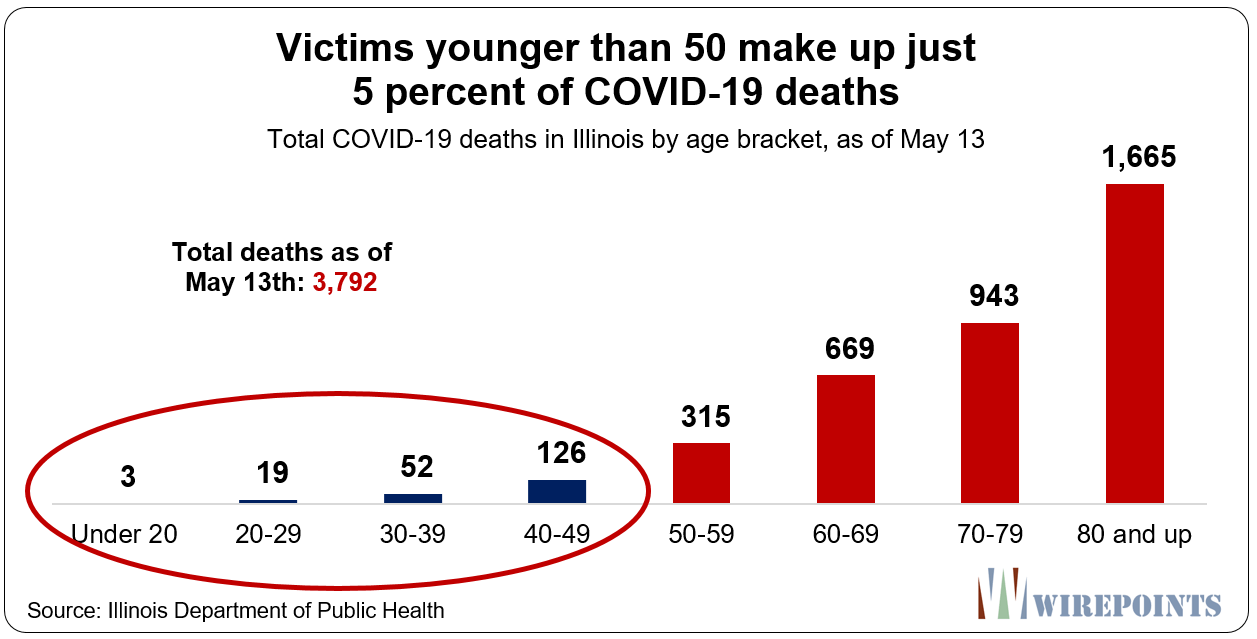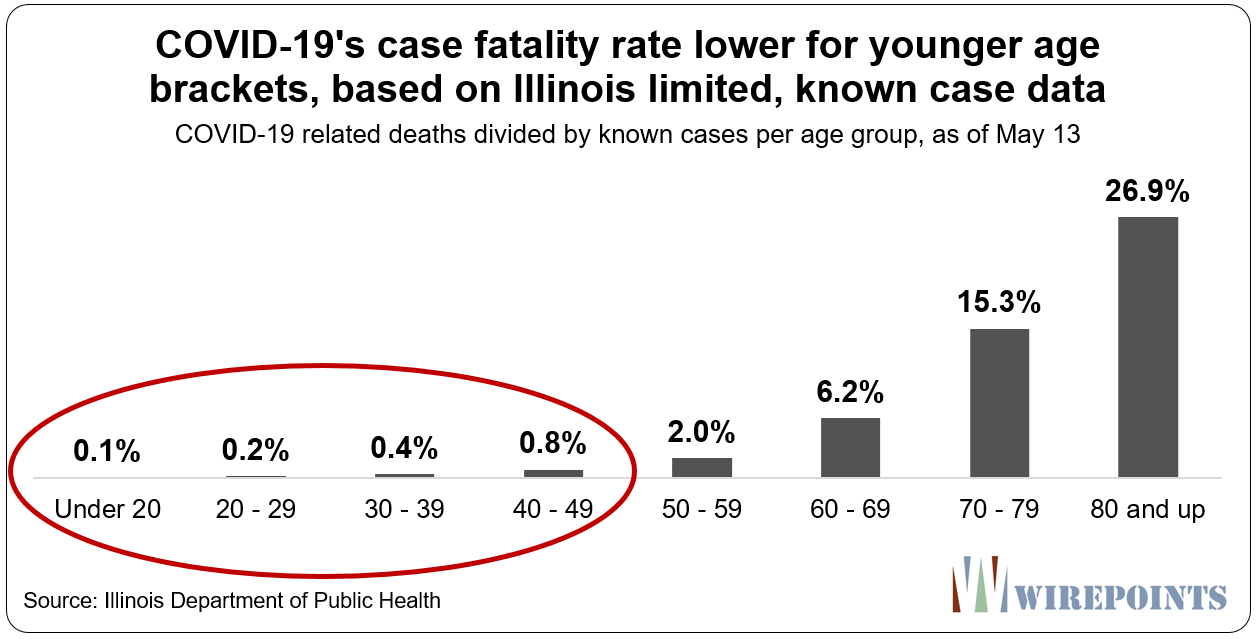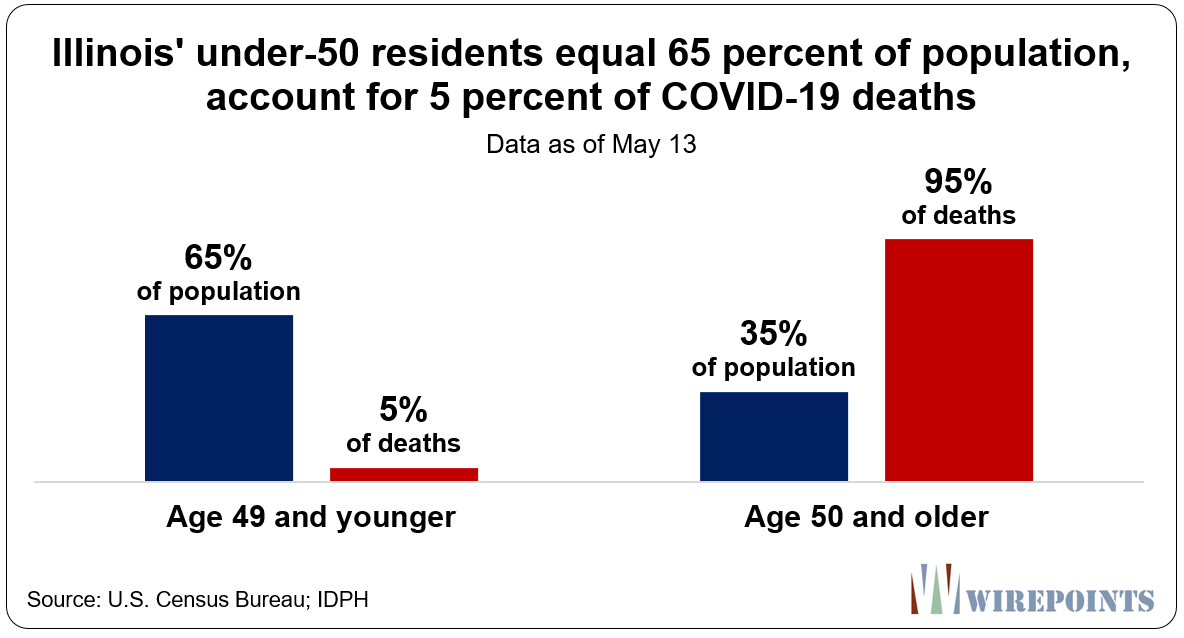Authored by Ted Dabrowski and John Klingner via Wirepoints.org,
Wirepoints recently analyzed data from Cook County’s Medical Examiner and found that 92 percent of Cook County COVID-19 victims had pre-existing conditions. Those that died had comorbidities including diabetes, obesity, hypertension and heart disease.
Many Americans have pre-existing conditions. Data from the CDC says that 45 percent of people have hypertension. Another 43 percent are obese. And another 10 percent have diabetes.
However, that doesn’t mean that all Americans with one or more pre-existing conditions are at serious risk of death from COVID-19. Illinois’ fatality data shows that the virus has had a limited impact on younger demographics.
Below we focus on the impact of COVID-19 on the under-50 population for three key reasons.
First, it’s important to determine whether it’s safe, in general, for the younger crowd to get back to school and college.
Second, it’s vital to determine if it’s safe for workers to get back to their jobs – the under-50 demographic makes up nearly 70 percent of Illinois’ workforce.
And third, it’s at age 50 where case-fatality numbers become more significant, in relative terms.
The limited impact on under-50s
If all Illinoisans with pre-existing conditions were at a similar risk of dying from COVID-19, then we’d expect to see a more even share of deaths across every age group. That’s not the case. The number of deaths in younger brackets are far outnumbered by those in older brackets. The number of deaths for those under 50 total just 200. In contrast, the virus has claimed 3,592 lives for those over 50.
The known-case fatality rates in Illinois (number of COVID-19 deaths divided by known cases) tell a similar story. The fatality rates go down dramatically as age decreases.
In particular, for those younger than 50, the average fatality rate is just 0.4%. (We know the real case-fatality number will be much, much lower once testing reveals the true number of cases). If pre-existing conditions were a major factor across all age groups, the fatality rates would be much higher in the younger age groups. But they aren’t.
The data is even more clear when looking across the entire population. About 65% of Illinois’ population is younger than 50, yet they make up just 5% of all COVID-19 deaths. In contrast, those over age 50 make up just 35% of the population, but 95% of all deaths. The data shows that pre-existing conditions aren’t impacting younger brackets like they are the 50-plus age group.
However, comorbidities are a key risk factor when combined with age and location (long-term care facilities). The elderly with pre-existing conditions and living in retirement homes are most at risk from COVID-19, according to the data.
Illinois needs far stricter controls, testing and PPE for nursing homes. We need to reverse Pritzker’s refusal to employ antibody tests to try to identify workers who could more safely care for those who are at risk. Far more attention needs to go there and toward protecting the elderly in general. We must be certain they can stay at home by assuring delivery of necessities.
Essential workers and younger people need to understand the importance of staying away from those at risk. Extended families need to be educated on how to physically distance within the same home, and perhaps offered assistance if they are in smaller homes where that is not possible.
Going forward
Reopening Illinois is important to limit the total deaths from this crisis: those stemming from COVID-19 as well as those from despair – residents who die from increased rates of poverty, suicide, domestic violence and drug abuse. In the longer run, depressions kill millions, and we do face a grave risk of a depression. Poorer economies have lower average lifespans because less money is available for health care, traffic safety, medical research, environmental advances, food safety and myriad other things that make life not only better but safer.
We can reopen Illinois by targeting our resources on those truly at risk to not only saves lives now, but in the long run.


